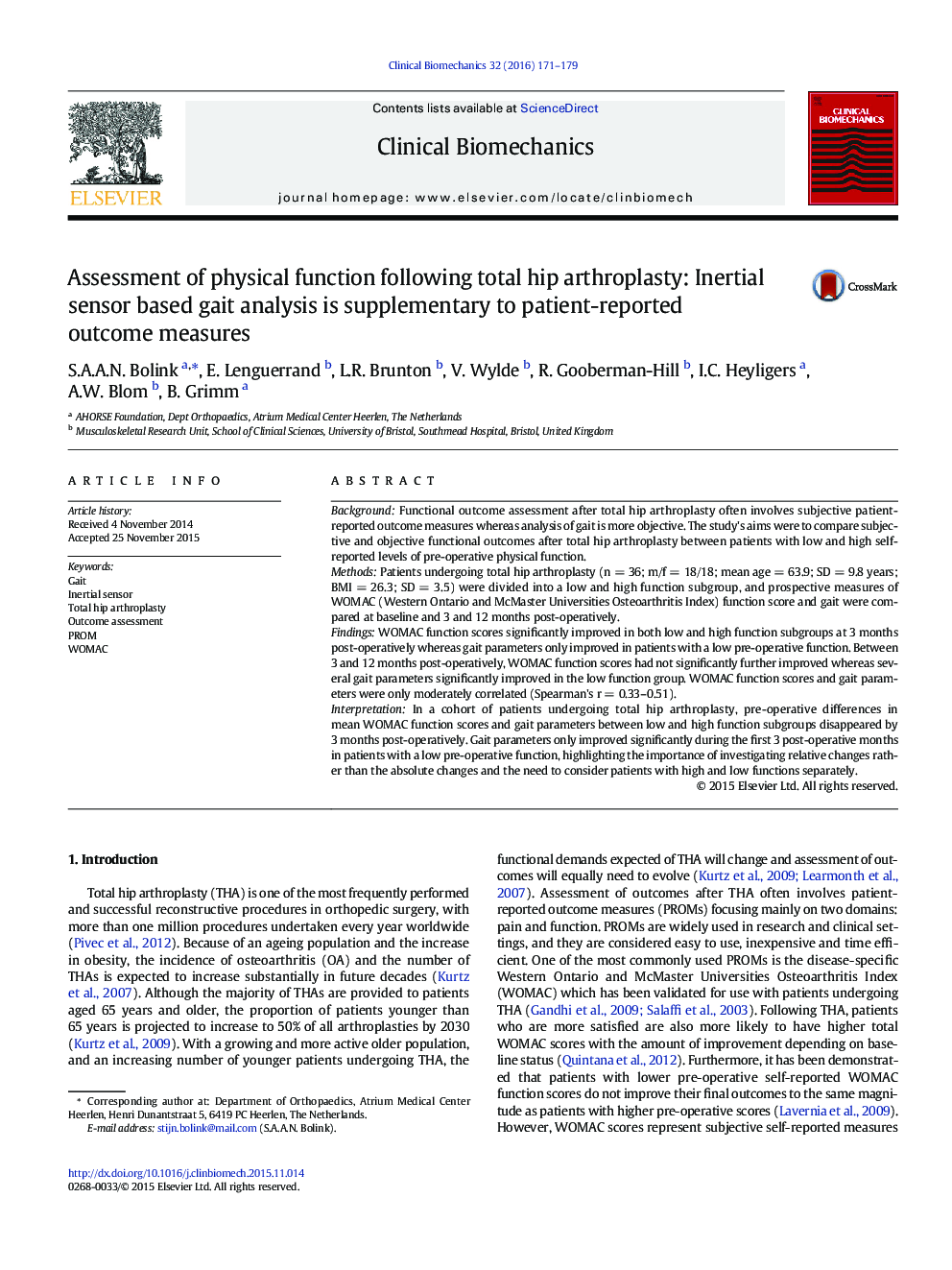| Article ID | Journal | Published Year | Pages | File Type |
|---|---|---|---|---|
| 6204632 | Clinical Biomechanics | 2016 | 9 Pages |
â¢Gait analysis and self-reported function are moderately correlated after total hip arthroplasty.â¢Gait analysis captures post-operative improvement beyond 3 months in follow-up.â¢Gait analysis is less sensitive to detect changes in patients with high pre-operative function.â¢One year after total hip arthroplasty, lower walking speed and smaller steps are still observed.â¢Comprehensive functional outcome assessment includes both relative and absolute changes.
BackgroundFunctional outcome assessment after total hip arthroplasty often involves subjective patient-reported outcome measures whereas analysis of gait is more objective. The study's aims were to compare subjective and objective functional outcomes after total hip arthroplasty between patients with low and high self-reported levels of pre-operative physical function.MethodsPatients undergoing total hip arthroplasty (n = 36; m/f = 18/18; mean age = 63.9; SD = 9.8 years; BMI = 26.3; SD = 3.5) were divided into a low and high function subgroup, and prospective measures of WOMAC (Western Ontario and McMaster Universities Osteoarthritis Index) function score and gait were compared at baseline and 3 and 12 months post-operatively.FindingsWOMAC function scores significantly improved in both low and high function subgroups at 3 months post-operatively whereas gait parameters only improved in patients with a low pre-operative function. Between 3 and 12 months post-operatively, WOMAC function scores had not significantly further improved whereas several gait parameters significantly improved in the low function group. WOMAC function scores and gait parameters were only moderately correlated (Spearman's r = 0.33-0.51).InterpretationIn a cohort of patients undergoing total hip arthroplasty, pre-operative differences in mean WOMAC function scores and gait parameters between low and high function subgroups disappeared by 3 months post-operatively. Gait parameters only improved significantly during the first 3 post-operative months in patients with a low pre-operative function, highlighting the importance of investigating relative changes rather than the absolute changes and the need to consider patients with high and low functions separately.
